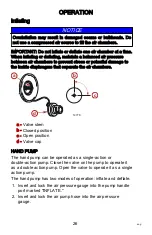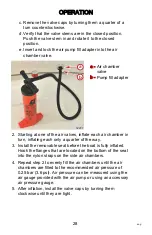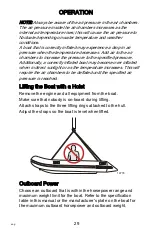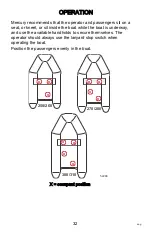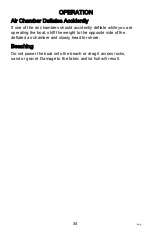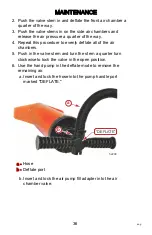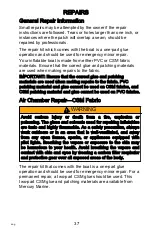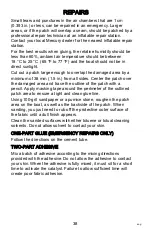
REPAIRS
40
eng
For the best results when gluing, the relative humidity should be
less than 60%, ambient air temperature should be between
18 °C to 25 °C (65 °F to 77 °F) and not in direct sunlight.
Cut out a patch large enough to overlap the damaged area by
38 mm (1.5 in.) on all sides. Center the patch over the damaged
area, and trace the outline of the patch with a pencil. Apply
masking tape around the perimeter of the outlined patch area to
ensure a tight and clean glue line.
Clean the patch area on the boat as well as the backside of the
patch with methyl ethel ketone patching solvent and cleaner. Do
not allow the solvent to contact your skin. After applying the
solvent, you will notice that the area will become tacky. This
tackiness ensures good glue adhesion.
ONE-PART GLUE (EMERGENCY REPAIRS ONLY)
Follow the directions on the cement tube.
TWO-PART ADHESIVE
Mix a batch of adhesive according to the mixing directions
provided with the two‑part adhesive. Do not allow the adhesive
to contact your skin. When the adhesive is fully mixed, it must sit
for a short time to activate the catalyst. Failure to do so will
create poor fabric adhesion.
Apply three thin layers of adhesive with a short bristle brush, in a
circular pattern on both the backside of the patch and the patch
area on the boat. Allow each layer to dry for 5–10 minutes before
applying the next layer. After applying the third layer, wait 5–10
minutes and then apply the patch to the prepared area and press
down firmly. Using a smooth object (a back of a tablespoon
works well), force out any air bubbles that may have been
trapped under the patch, working from the center of the patch to
the outside.
After removing the masking tape, place a 4–5 pound weight onto
the patch and allow 24 hours drying time before pressurizing the
repaired air chamber.

